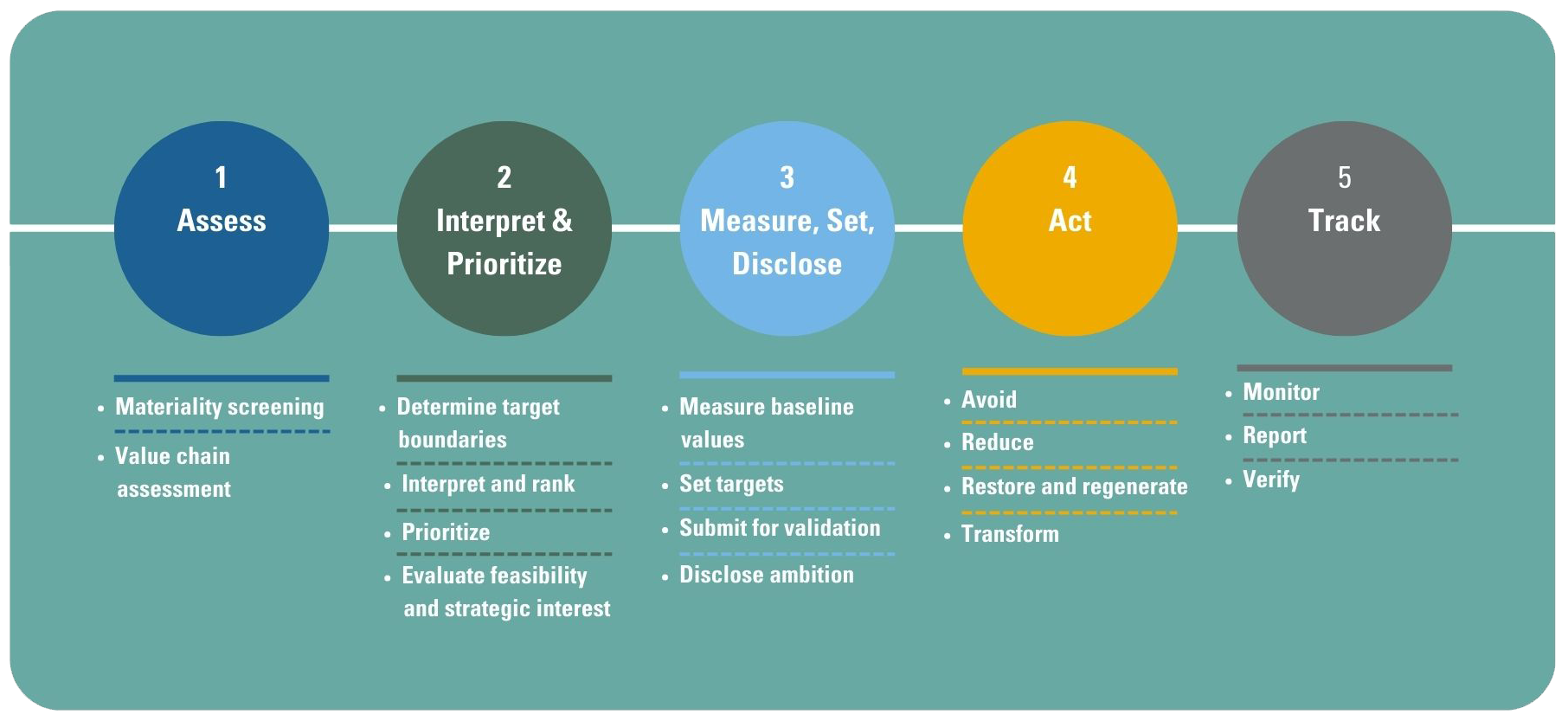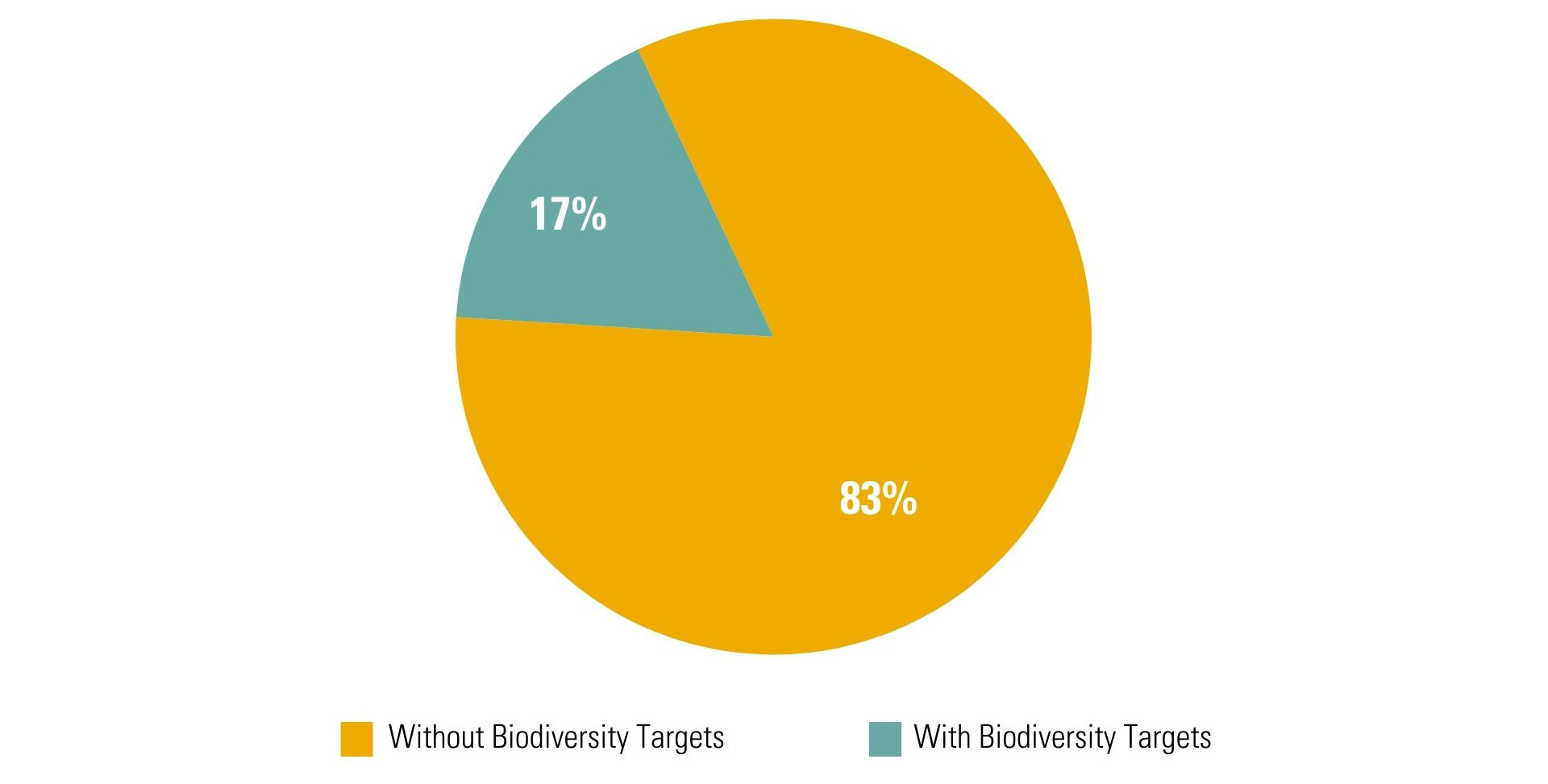The Kunming-Montreal Global Biodiversity Framework, adopted during COP15 in 2022, set an ambitious agenda with 23 targets to halt and reverse biodiversity loss by 2030.1 The subsequent conference, COP16, will take place on October 2024 and signals a critical moment. Ahead of the conference, countries are expected to revise their National Biodiversity Strategies and Action Plans (NBSAPs) in alignment with the framework. As nations re-align their global commitments into country-level actions, businesses and financial institutions will be expected to progressively minimize their negative impacts on biodiversity while fostering positive ones.
Yet a stark reality remains. Most companies are not even at the initial stages of recognizing, quantifying and understanding the scope of their impact and their dependencies on nature. With global biodiversity goals established and science-based targets for nature developed, the scaffolding is in place for companies to begin changing course. This article highlights key areas to advance progress through stewardship initiatives in 2024.
Where Do We Stand on Biodiversity Loss?
All economic activities inherently depend on nature to varying degrees and the consequences of mismanaging its resources can be severe. Companies contributing to biodiversity loss, either through their direct operations or their supply chains, face substantial financial losses2 and can create portfolio risks for investors.3
Despite this risk, most companies have yet to identify and understand the magnitude of their impact and dependencies on nature along their value chain. According to the 2023 Nature Benchmark, only 2% of the world’s 350 largest food and agriculture companies currently disclose their environmental impacts.4

Even more startling, none of these companies comprehensively address their dependencies on nature.5 This step is essential to enable companies to take meaningful action. With only six years left to meet the targets of the Global Biodiversity Framework, companies should not delay this assessment.
Adopting a Strategic Approach to Dealing With Nature
Once a company has evaluated its material impacts, dependencies, risks, and opportunities, it can begin to outline a strategy to contribute to a nature-positive world. Creating and implementing a formal strategy is key to scaling and speeding up business action on nature. Despite this, 56% of companies in Sustainalytics’ Biodiversity and Natural Capital Stewardship Program have yet to take a strategic approach to address biodiversity.6
The Nature Strategy Handbook, published by the Business for Nature coalition, is a valuable tool supporting companies in developing and publishing a nature strategy. The strategy should include nature-related targets and actions to address issues such as land and sea use change, overexploitation, and pollution. The company’s strategy should be aligned with the Global Biodiversity Framework, and the targets should be science-based, making clear contributions to achieving the stated ambition. Actions taken to progress towards these targets should adhere to the mitigation hierarchy or the Science-Based Targets Network (SBTN) Action Framework (see step 4 in Figure 1).7
Figure 1. The Five-Step Process for a Business to Set Science-Based Targets

Source: Science-Based Targets Network.
How the Science Based Targets Network Empowers Change
The SBTN equips companies to contribute to a nature-positive future. It is a crucial resource, offering guidance to assess and prioritize the most significant impacts on nature, set science-based targets, take action and track progress.
The first science-based targets for nature guidance was released in May 2023, and after conducting validation pilots, the broader roll out of SBTN methods will launch this year. Guidance is already available to assess and prioritize impacts and set targets on freshwater (i.e., freshwater quantity and quality) and land (i.e., no conversion of natural ecosystems, land footprint reduction, and landscape engagement).8 We expect the first release of the oceans methodology to be released in 2025.
The SBTN resources come at a critical time, as very few companies have made progress in target setting. Sustainalytics’ ESG Risk Ratings data assesses the strength of biodiversity programs of companies where biodiversity issues are especially material.

The data shows that 83% of the 677 companies assessed did not have a biodiversity target (See Figure 2).9 In addition, we found that 42% of the 50 companies engaged in Sustainalytics’ Biodiversity and Natural Capital Stewardship program have not set any nature-related targets.10
Figure 2. Percentage of Companies With and Without Biodiversity Targets

Source: Morningstar Sustainalytics. For informational purposes only.
Investor Influence and Redirecting Flows for a Nature-Positive Future
Public and private financial flows towards activities with negative impacts on nature immensely outweigh flows to nature-based solutions.11 The gap between current biodiversity financing and what is needed by 2030 remains vast.
With consolidated guidance and frameworks to understand biodiversity-related risks and opportunities and to set science-based targets, 2024 should be the year businesses identify their nature-related risks and take action toward nature-positive outcomes.
Investors, as shareholders, have a key opportunity to set commitments and clear expectations. Through effective stewardship, companies can be encouraged to develop a nature strategy aligned with the Global Biodiversity Framework and backed by science-based targets.
Investors can leverage the power of stewardship through Morningstar Sustainalytics’ Biodiversity and Natural Capital Stewardship Program. Within our program, we engage with key companies across the agricultural value chain to address specific gaps in their biodiversity management, covering governance, risk management, strategy, targets, and transparency. Engagement is guided by our outcome framework which leverages the latest standards, frameworks, regulatory insights, and leading practices, ensuring a focused and effective approach.
References
- Convention on Biological Diversity. 2022. “Decision adopted by the Conference of the Parties to the Convention on Biological Diversity”. December 19, 2022. https://www.cbd.int/doc/decisions/cop-15/cop-15-dec-04-en.pdf
- BloombergNEF. 2023. “When the Bee Stings: Counting the Cost of Nature-Related Risks.” December 9, 2023. https://assets.bbhub.io/professional/sites/24/BNEF_Nature-Risk.pdf
- Vezér, M. 2024. “Biodiversity in the Balance: Hedging Portfolio Risks.” Morningstar Sustainalytics. January 2024. https://connect.sustainalytics.com/biodiversity-in-the-balance-esg-spotlight
- World Benchmarking Alliance. 2023. “2023 Nature Benchmark.” October 2023. https://www.worldbenchmarkingalliance.org/publication/nature/
- Ibid.
- This information comes from Morningstar Sustainalytics internal data. For informational purposes only.
- Science Based Targets Network. 2023 “Frequently Asked Questions.” Accessed February 16, 2024. https://sciencebasedtargetsnetwork.org/resources/frequently-asked-questions/
- At the time of writing, the SBTN Land Technical Guidance is in its beta version.
- Shahbazian, G. 2023 “Factoring in Biodiversity: Companies just aren’t ready.” April 20, 2023. https://www.sustainalytics.com/esg-research/resource/investors-esg-blog/factoring-in-biodiversity-companies-just-aren't-ready
- This information comes from Morningstar Sustainalytics internal data. For informational purposes only.
- UNEP. 2023. “State of Finance for Nature 2023.” December 9, 2023. https://www.unep.org/resources/state-finance-nature-2023




